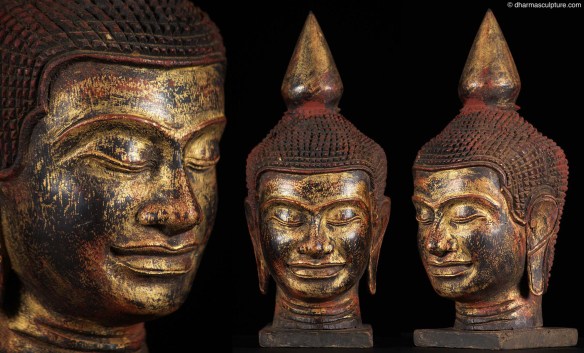In this beautiful sculpture the eight-faced, sixteen-armed, four-footed Hevajra is depicted lithely dancing clasping his consort Nairatmya (“selfless one”) in a close embrace.
One pair of legs assumes a powerful stance, the left knee bent (alidha), the other pair assumes a dancer’s pose (ardha pariyanka). Crushed underneath are four corpses representing the four Maras or demons who embody all the active hindering forces within the psyche and in the objective world, that work to deflect us from the spiritual goal. In his eight right hands he holds eight skull cups each containing an animal: an elephant, a horse, a donkey, an ox, a camel, a man, a tiger and a cat. In his eight left hands he also holds eight skull cups with the eight deities of the cardinal directions.
Nairatmya, the consort of Hevajra has two hands and two legs. In her left hand she holds a skull cup while the right hand holds a vajra. Her left leg is bent down along with his, while her right leg is wrapped around his waist. Her expression is also wrathful. They both wear elaborate belts with beaded festoons, garlands of severed heads and skull tiaras.
Carrying skull cups in all of the hands is one of the most distinctive features of Hevajra. The skull cup represents the mind aspect of the body, speech, and mind notion. It also represents death and impermanence, the illusory nature of all the phenomena. The animals and gods in Hevajra’s skull cup may symbolize a universal range of all matter and beings, alive, on earth and in the heavens. Thus, the sixteen skull cups collectively symbolize the sixteen voidness or Shunyata.
Hevajra is a wrathful emanation of the Buddha Akshobhya. He is a popular deity in Tibet, where he belongs to the yidam (tutelary, or guardian, deity) class. His worship is the subject of the Hevajra Tantra, a scripture that helped bring about the conversion of the Mongol emperor Kublai Khan (1215–94). He is one of the more common yet complex deities depicted in Buddhist art!










